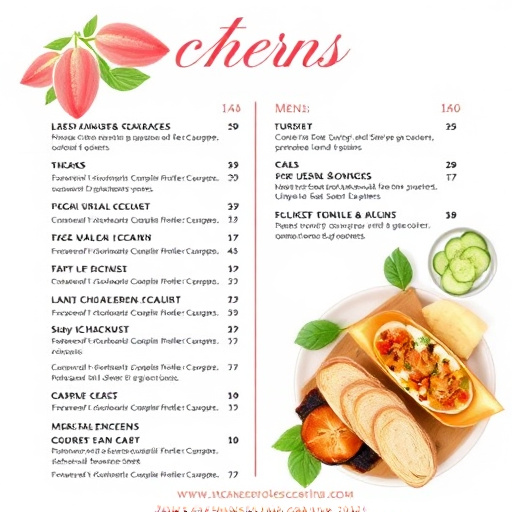Artisan Party Food: Custom Flavors Redefine Social Gatherings
The culinary industry is witnessing a trend towards artisanal party food, as guests seek unique, per…….
Welcome to an immersive journey into the world of artisan party food—a culinary concept that has captivated taste buds and transformed social gatherings worldwide. This article aims to delve into every facet of this vibrant and dynamic industry, offering a comprehensive guide for both enthusiasts and professionals alike. From its historical roots to contemporary trends, economic implications, and technological innovations, we will uncover the secrets behind artisan party food’s enduring appeal. Prepare to be enthralled as we explore how this culinary art form not only delights palates but also influences global dining cultures.
Definition:
Artisan party food refers to a category of gourmet or specialized foods crafted by skilled individuals, often known as artisans, who prioritize quality, uniqueness, and culinary excellence. These dishes are typically prepared in small batches using traditional methods, locally sourced ingredients, and an emphasis on sustainability. The term ‘artisan’ signifies the expertise, creativity, and passion that goes into creating each mouthwatering creation.
Core Components:
Historical Context:
The roots of artisan party food can be traced back centuries, when local cooks would prepare specialties for communal feasts and festivals. However, the modern interpretation emerged in the late 20th century with a revival of interest in traditional culinary arts and a growing demand for gourmet, artisanal products. This movement gained momentum in Europe and North America, fueled by consumers’ desires for premium, natural, and locally sourced foods.
Artisan party food has transcended geographical boundaries, leaving an indelible mark on global dining scenes. Its influence is evident across diverse regions, each contributing unique cultural elements to this culinary genre.
International Influence:
Key Global Trends:
The global artisan party food industry is a dynamic sector with significant economic implications, shaping local and international markets.
Market Dynamics:
Investment Patterns:
Economic Impact:
Technology has played a pivotal role in transforming the landscape of artisan party food, enabling culinary artists to push boundaries and enhance their creations.
Digital Tools:
Equipment Innovations:
Future Tech Trends:
The artisan party food industry is subject to various policies and regulations that ensure food safety, quality, and ethical practices.
Key Policies:
Legislative Frameworks:
Despite its growing popularity, the artisan party food industry faces several challenges and criticisms that require strategic solutions.
Main Challenges:
Proposed Solutions:
Let’s explore a few remarkable case studies that highlight the power of artisan party food and its impact on local communities and the culinary landscape.
Case Study 1: Blue Mountain Bakeshop, Canada
This award-winning bakery in the picturesque Blue Mountains region of Ontario has become a destination for artisanal baked goods. They focus on using locally sourced, organic ingredients and traditional baking methods. By emphasizing quality and uniqueness, they’ve cultivated a loyal customer base and attracted international attention. Their success lies in combining authentic flavors with stunning presentation, making each visit an experience to remember.
Case Study 2: La Casera, Spain
La Casera is a family-run tapas bar in a small Andalusian village. They’ve achieved global fame through their commitment to traditional Spanish cuisine and locally sourced ingredients. Their menu showcases regional specialties, such as olive oil-soaked breads, hand-crafted hams, and fresh seafood paella. By preserving local culinary heritage, La Casera has become a symbol of Spain’s rich gastronomic culture, attracting food enthusiasts from around the world.
Case Study 3: Noma, Denmark
Considered one of the world’s best restaurants, Noma in Copenhagen has pioneered Nordic cuisine with its innovative approach to artisanal ingredients. Chef René Redzepi sources locally and seasonally, creating dishes that celebrate Denmark’s agricultural bounty. Noma’s success lies in its dedication to excellence, creativity, and sustainability, making it a global leader in the culinary arts.
The artisan party food industry is poised for continued growth and evolution, with several emerging trends shaping its future.
Potential Growth Areas:
Emerging Trends:
Strategic Considerations:
Artisan party food is more than just a culinary trend; it represents a cultural shift toward appreciation for quality, craftsmanship, and sustainability in our food systems. From its rich history to its global impact, this industry has captivated the senses and transformed dining experiences worldwide. As technology advances and consumer preferences evolve, artisan chefs will continue to push boundaries, creating dishes that resonate with people’s desire for authentic, memorable, and ethically sourced culinary delights.
Q: What sets artisanal food apart from commercial food production?
A: Artisanal foods are typically produced in small batches using traditional methods, focusing on quality, uniqueness, and ingredient integrity. They often have a more labor-intensive process, resulting in higher prices but also offering a superior taste experience.
Q: How do I identify authentic artisanal products?
A: Look for certifications, such as organic or fair trade labels, which ensure certain standards. Artisanal producers often share their stories and origins, so check their websites or packaging for these details. Visit local markets or specialty stores known for stocking artisanal goods.
Q: Can artisan food be affordable?
A: While some artisanal products are premium priced, there are many accessible options. Local farmers’ markets, community-supported agriculture (CSA) programs, and discount retailers often offer reasonably priced artisanal treats, such as baked goods or preserved foods.
Q: How does technology benefit artisan food producers?
A: Technology enables artisans to reach wider audiences through online platforms, streamline operations with efficient equipment, and share knowledge with a global community. It also aids in product development, marketing, and customer engagement.
Q: Are there any challenges for artisanal food businesses going global?
A: Challenges include adapting to different cultural tastes, navigating international regulations, and maintaining quality standards while scaling production. However, the global demand for unique culinary experiences presents significant opportunities as well.

The culinary industry is witnessing a trend towards artisanal party food, as guests seek unique, per…….

Planning an event? Choose artisan party food that balances guest preferences with unique presentatio…….